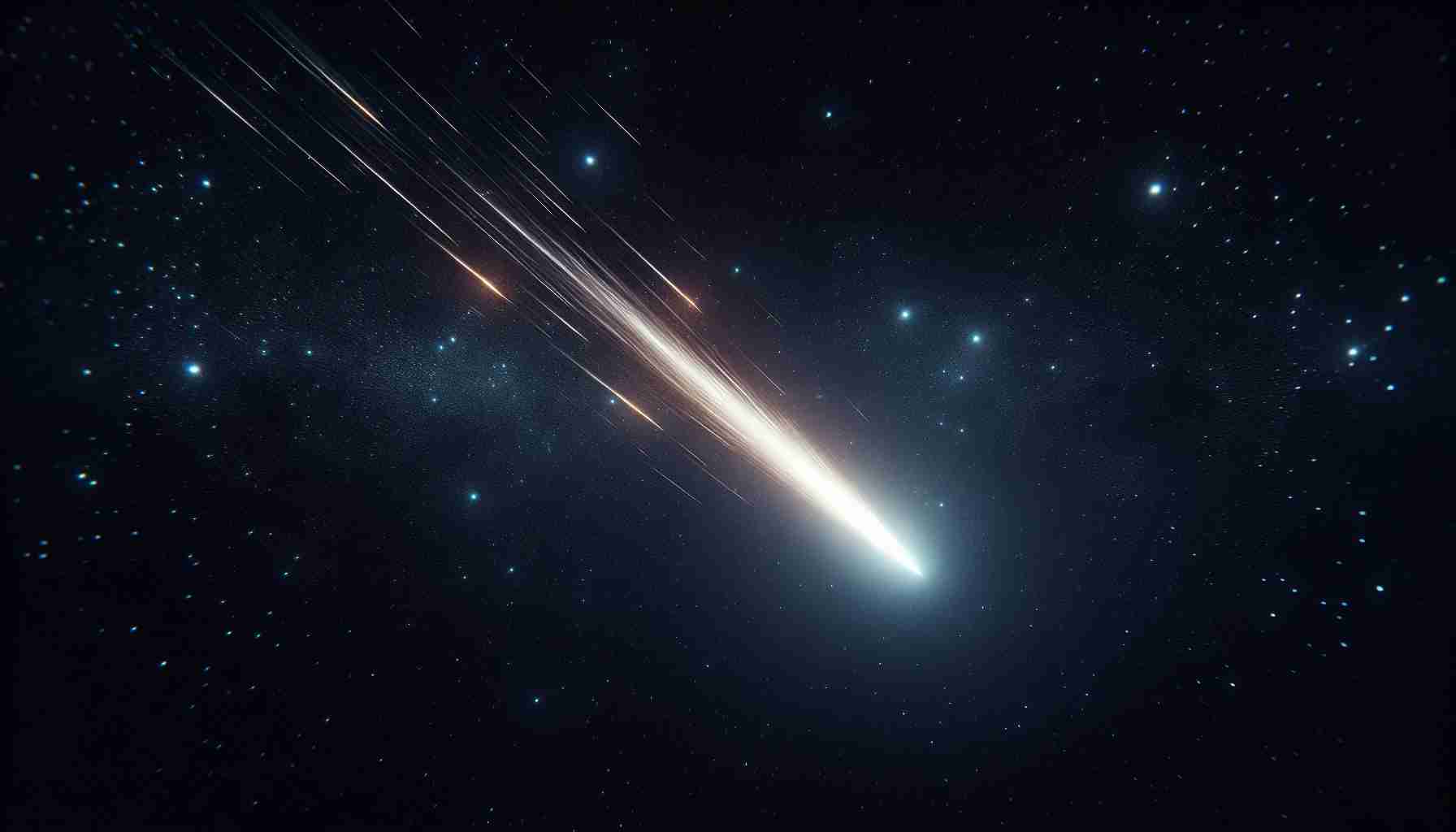
On the evening of November 9, a spectacle unfolded in the central United States as a brilliant streak illuminated the night, captivating the attention of many. This dazzling display, visible around 10 p.m. CST, has since been identified by astronomers as a Starlink satellite re-entering Earth’s atmosphere.
Reports from 36 observers across states like Colorado, Kansas, Oklahoma, and Texas confirmed the sighting, with individuals noting its slow movement and prolonged visibility, distinguishing it from a typical meteor event. One witness shared their astonishment at the experience, recalling the unique duration and brightness of the object compared to common meteors they’ve seen.
Further excitement arose when some accounts described the satellite shattering into multiple fragments as it descended. Visual documentation captured the fiery orb, revealing its reddish hue as it glided across the sky, leaving spectators in awe of the unprecedented phenomenon.
Prominent astronomer Jonathan McDowell identified the object as Starlink-4682, part of SpaceX’s expansive satellite network. He elaborated that such re-entries occur consistently, raising concerns about the environmental implications of multiple satellites entering the atmosphere. While individual events may not pose significant risks, the cumulative effects of numerous re-entries remain an area of ongoing research, highlighting a need for cautious monitoring of satellite activities.
A Mysterious Streak in the Night Sky: Unraveling the Phenomenon of Satellite Re-Entry
On the evening of November 9, the skies over the central United States were graced with a remarkable sight: a brilliant streak of light that left onlookers mesmerized. Initially identified as a re-entering Starlink satellite, this event has not only sparked a sense of wonder among observers but also prompted further questions into the nature of such occurrences and their implications.
What Exactly Happened on November 9?
The celestial display was attributed to Starlink-4682, a satellite from SpaceX’s ambitious project aimed at providing global internet coverage. Observers noted that its re-entry was distinct, displaying characteristics that set it apart from typical meteor showers. This highlights the increasing visibility of human-made objects in our skies and the need for public awareness regarding the ramifications of such entities.
Key Questions and Their Answers
1. Why are satellite re-entries increasingly visible to the public?
As the number of satellites in low Earth orbit (LEO) expands, so does the likelihood of their re-entering the atmosphere becoming visible from the ground. Starlink’s plan includes launching thousands of satellites, increasing the frequency of potential sightings.
2. What are the risks associated with satellite re-entries?
While individual satellites are designed to burn up upon re-entry, the main concerns stem from the potential for larger fragments to survive and reach the Earth’s surface. Furthermore, the environmental impacts of many satellites burning up includes the production of pollutants and space debris.
3. How frequently do such events occur?
According to experts, satellite re-entries happen regularly, with dozens of satellites expected to return to Earth every year. The rising number of private space ventures and their satellite deployments indicates this trend will only increase.
Challenges and Controversies
The phenomenon of visible satellite re-entries raises several challenges and controversies. One of the primary issues is space debris. As more satellites are launched, the risk of collision in space rises, potentially creating more debris that could complicate future missions and safety.
Additionally, there are debates surrounding the growing visibility of satellites in the night sky, which some astronomers argue could interfere with astronomical observations and disturb the natural night environment. The aesthetics of the night sky are also impacted, sparking a discussion about the balance between technological advancement and preserving our celestial heritage.
Advantages and Disadvantages
Advantages:
–
- Enhances global communication and internet access through initiatives like Starlink.
- Increased public engagement in astronomy and space science as more people witness these events.
- Potential for improved monitoring of space debris and satellite behavior through observational experience.
Disadvantages:
–
- Potential environmental impacts from satellite debris and re-entries.
- Interference with scientific observations and the pristine night sky.
- Public concern and confusion about the nature of such phenomena and their potential risks.
As the technology surrounding satellite launches evolves, public interest in these mysterious streaks across our night sky will likely grow. Collaborative efforts between space agencies, private companies, and observers are essential to ensure that the wonders of the cosmos remain both captivating and sustainable.
For further insights into satellite technology and its implications, visit SpaceX and explore their innovative approaches to satellite deployment and space exploration.



